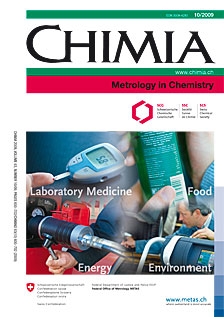No Rationale for a Redefinition of the Mole
DOI:
https://doi.org/10.2533/chimia.2009.616Keywords:
Avogadro's constant, Base unit, International system of units, Mole, RedefinitionAbstract
In the wake of the redefinition of the kilogram, the last unit of the International System of Units (SI) that is still based on a man-made artefact, discussions were launched on the necessity of redefining other units, amongst other the unit mole. Since 1971 the mole is defined as the amount of substance of a system that contains as many elementary entities as there are atoms in 0.012 kilogram of carbon 12. The symbol of the unit is 'mol'. When the mole is used, the elementary entities must be specified and may be atoms, molecules, ions, electrons, other particles, or specified groups of such particles. The definition is based on the pre-existing choice to set the relative atomic mass of carbon 12 equal to 12 exactly. In the proposed new definition the mole is the amount of substance containing exactly 6.022 141 79 × 1023 atoms or molecules, ions, electrons, other particles, or specified groups of such particles, i.e. the Avogardo constant would have a fixed value without an uncertainty. This contribution critically examines the submitted arguments to justify the proposed redefinition of the unit mole by 2011 for their persuasive power to change a scientific and cultural good such as a unit of measurement. As shown, there are no convincing scientific arguments for a redefinition of the mole that stand a closer examination. The current definition is well understood, established in science and technology for almost 50 years and is still up to date.Downloads
Published
2009-10-28
Issue
Section
Scientific Articles
License
Copyright (c) 2009 Swiss Chemical Society

This work is licensed under a Creative Commons Attribution-NonCommercial 4.0 International License.
How to Cite
[1]
Chimia 2009, 63, 616, DOI: 10.2533/chimia.2009.616.







